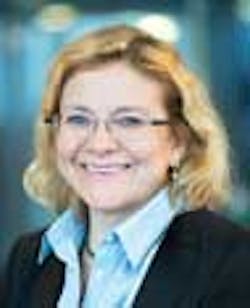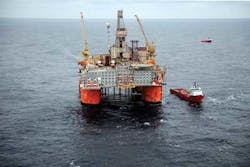Improved efficiency, partner collaboration needed to safeguard Norway's future
Nick Terdre
Contributing Editor
At a time of growing cost challenges in Norway's offshore sector, one influential player is Petoro, the company that manages a large portfolio of field interests on the state's behalf. That portfolio represents around one-third of the country's reserves.
The value of the SDFI (State's Direct Financial Interest) portfolio at the beginning of this year was NOK 1,234 billion ($200 billion) according to consultant Rystad, working on behalf of Norway's Ministry of Petroleum and Energy. Last year, under Petoro's management, the portfolio yielded a cash flow to the government of NOK 125 billion (20.19 billion).
Petoro participates as a partner in 189 licenses on the Norwegian continental shelf, including 34 producing fields. It also has stakes in various significant discoveries including the giant Johan Sverdrup field, which is expected to be in production for more than 50 years, and the Johan Castberg area fields in the Barents Sea.
The company is charged with maximizing value from the SDFI assets. It operates with a staff of less than 70, but by focusing on a handful of fields or projects at a time, has achieved a difference. It can combine its own resources with those of external contractors where required, and works collaboratively with license operators and partners.
Drilling taking longer
Production wells account for close to half of Petoro's annual NOK 30-40 billion ($4.84-6.46 billion) of investments. But trends are heading in the wrong direction – the company says well costs have quadrupled on its fixed platforms over the past 10 years, while standard drilling jobs can now take twice as long as they did two decades ago.
This is due partly to creeping inefficiency, in particular the growing number of procedures and industry demands to prevent failures and achieve fault-free performance. Having analyzed 25 standard tasks within the drilling operation, Petoro believes that that it should be possible to drill wells 30% faster by reverting to previous ways of working, while still maintaining present HSE standards.
(Photo by Emile Ashley)
However, costs throughout the industry are proving hard to contain, rising on average 5-6% over the past five years. The impact has been detrimental on improved oil recovery (IOR) projects in mature fields and on new developments, particularly of the smaller discoveries being made these days on the shelf.
The industry, too, is partly responsible for rising costs, allowing more extensive processes and requirements to creep in, and introducing new elements without assessing them properly for their impact on efficiency and total risk. "We need to simplify formal procedures and find practical ways of doing things," Moen says. "And we need to make a bigger effort to standardize where we currently use tailor-made solutions."
The reduction in cash flow that has resulted from rising costs without an equivalent rise in oil prices in recent years has prompted some companies to postpone projects. However, postponement does not in itself improve a project's profitability -- Petoro would rather see periods of suspension used positively to improve projects in terms of revenue and cost, as well as operational efficiency.
"We always have to remember that some investment opportunities are time-critical, particularly for projects in mature fields," says Moen. "Such decisions have to be made while there is still sufficient remaining potential for oil and gas reserves to justify the investments." Additionally, she points to the need to harness existing infrastructure to ensure profitable development of smaller nearby fields.
Long-term goals
Petoro has adopted a three-fold strategy, which reflects its involvement in the different links of the value chain:
- Mature fields – investing for improved recovery
- Field development – safeguarding future opportunities
- Norway's far north – promoting integrated development.
When it comes to improving recovery from mature fields, attention to detail is all-important, the company believes, as exemplified in the Snorre 2040 project in the North Sea (Petoro has a 30% interest in the Snorre field). According to Moen, the study program so far "…has demonstrated with all possible clarity that the more technical detailing we have done, the greater potential for improved recovery…and the greater the need becomes to drill new production wells."
The forward plan that Statoil and the partners adopted last year for Snorre calls for a new wellhead platform with minimal processing facilities and up to 40 new wells. They rejected an alternate subsea option on grounds of viability. A platform allows wells to be drilled more efficiently and in greater numbers. Petoro believes it will be possible to recover an additional 250 MMbbl through this project, four times more than from a subsea scheme.
Another IOR initiative is the Ormen Lange subsea compression project in the Norwegian Sea. Petoro expressed reservations when operator Norske Shell announced a postponement this spring. While accepting that the program in its current format could not continue, Moen stressed the imperative to realize the Ormen Lange field's huge remaining potential. She called for "a clear plan with sufficient resources behind it to ensure that we meet Ormen Lange's need for compression in time."
As for the development of new fields, Petoro wants to see opportunities for improved recovery implemented right from the point of concept selection. "We have learnt that elements such as adequate topside space, opportunities to drill many wells, sufficient pressure support and facilitating the adoption of enhanced oil recovery (EOR) methods from an early stage are critical building blocks from the start," Moen says. Although Petoro's interest in the giant Johan Sverdup field development has yet to be determined, the selected development concept reflected those principles, she believes. The first stage facilities, due onstream in late 2019, will include a four-platform field center.
In the Barents Sea, Petoro holds stakes in 27 licenses, including a 20% interest in Statoil's Johan Castberg fields. The region is being explored and other promising discoveries have been made. Petoro is pressing for synergies for multiple developments in the area via the establishment of offshore infrastructure.
The original concept for Johan Castberg was a semisubmersible production platform with oil exported by pipeline to a terminal in Norway's far north. But because drilling for additional resources around the field has been somewhat disappointing, the licensees have also been assessing an alternate concept involving an FPSO and oil loading offshore.
"At the end of the day, it will be down to the Johan Castberg partners to decide how the field will be developed," Moen says. "However, the partners should keep looking for more resources that can go into the development plan, while at the same time optimizing the concept and reducing costs. Hopefully this will result in a concept which is flexible enough to also contribute to a future infrastructure development that will benefit Johan Castberg itself, as well as discoveries in other parts of the Barents Sea."


